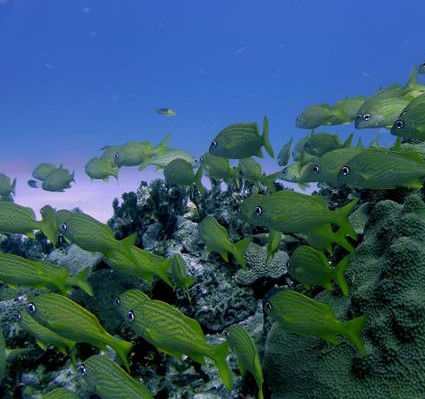![]()
- 2018 Active Divers Dive Cruise
- Save the Date: Back to Bonaire
- Diving Before Scuba - Part 1
- Shark Facts
- 2019 Sea of Tomorrow Scholarships and Training Grants
- Earning the AAUS Certification
- Dive Gear Storage
- Coral Restoration Foundation Refunds Are Issued
- Shark Types 2: A Continuation of the Series
- It's Time To Renew
- Great Barrier Reef Recovering Better Than Anticipated
- Newsletter Delivery Options
- Email or Address Change?
- T-Shirts For Sale
- Active Divers Guidelines & Policies
This is It: 2018 Active Divers Dive Cruise is Almost History!!!
images/1218_Sky_Princess.png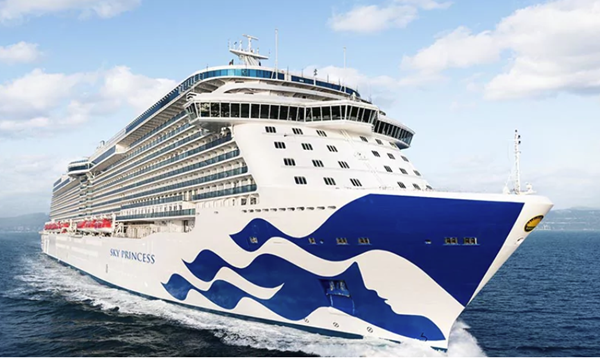
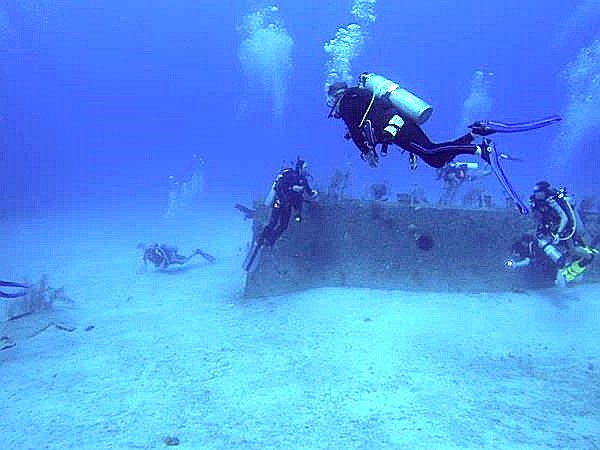 Procrastinators
unite! By cleverly waiting until the last minute, you can snag the
best prices for the remaining inventory on the ship. Balcony cabins
are only $579 - that’s less than $83 per person,
per day for your lodging, transportation, entertainment and all the
food you can eat. That's not a misprint! Interior cabins are going
for even less. You can barely go out to dinner at a nice restaurant
in Fort Lauderdale for that price. Eight (8) cabins have already
been booked for the dive cruise for this year since it is such a
spectacular itinerary! It's a round trip on the Royal Princess from
Fort Lauderdale on November 24, 2018 for seven days and stops at
four great dive locations: Cozumel, Grand Cayman, Belize and Costa
Maya. Try and match that itinerary any other way you can to
get to all these dive destinations!!! And, if we keep at least five
cabins booked in our group, you will get an onboard credit for
booking through our Princess Cruise Planner.
Procrastinators
unite! By cleverly waiting until the last minute, you can snag the
best prices for the remaining inventory on the ship. Balcony cabins
are only $579 - that’s less than $83 per person,
per day for your lodging, transportation, entertainment and all the
food you can eat. That's not a misprint! Interior cabins are going
for even less. You can barely go out to dinner at a nice restaurant
in Fort Lauderdale for that price. Eight (8) cabins have already
been booked for the dive cruise for this year since it is such a
spectacular itinerary! It's a round trip on the Royal Princess from
Fort Lauderdale on November 24, 2018 for seven days and stops at
four great dive locations: Cozumel, Grand Cayman, Belize and Costa
Maya. Try and match that itinerary any other way you can to
get to all these dive destinations!!! And, if we keep at least five
cabins booked in our group, you will get an onboard credit for
booking through our Princess Cruise Planner.
So how easy is it to book the fourth annual dive cruise in 2018??
All you have to do is call our Cruise Planner, Karen Bradder at
1-800-901-1172 ext. 41643 and tell her that you want to book the
Active Divers Group cruise (code TPH) and make a deposit. That’s it,
no muss, no fuss and you will be ready for an outstanding trip with
ADA!! But hurry as supplies are very, very limited!
See you onboard!
![]()
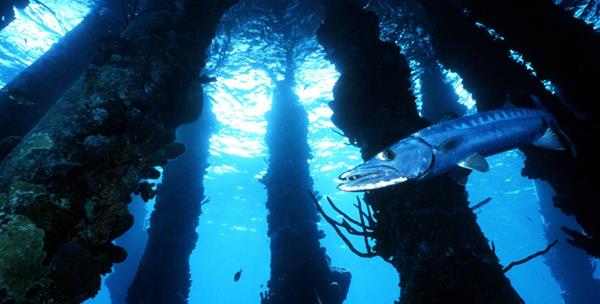
Dateline: 2019 Active Divers Caribbean International Dive Trip - By popular request, next year’s Caribbean dive trip is proposed for Bonaire, Netherland Antilles from July 20 to July 27. I have had several suggestions on where to stay but as usual, will be waiting for the fall DEMA show specials to come out to make a final decision. Right now I am planning on July 20 through 27, 2019 but this may change depending on resort availability and other factors.
Many of the resorts on Bonaire offer apartment style accommodations with 1, 2 and 3 bedrooms. The rates per person go down when you stay in a three bedroom unit versus a one bedroom by about $150-$200 as long as there are two people booked per bedroom. Final prices are still being negotiated but you can expect anywhere from $1000 to $1300 per person for a seven night trip depending on the accommodations you select. I really need some expression of interest (not a financial obligation!!) to plan this trip so if you are interested, please drop an email to diverdaryl@bellsouth.net with an indication of what kind of room you would want.
So save the date (July 20 through July 27, 2019) for a return to one of our favorite diving locations!!
![]()
The science and technology of scuba diving has evolved rapidly
during the time that many of our Active Divers members have been
diving, making some of us older members feel that we have been
directly involved in seeing most of scuba diving’s history being made.
However, modern scuba diving is the result of thousands of years of
trial and error, innovation, ideas and daring experiments. This first
installment in a two-part series examines the early roots of humans’
efforts to explore the ocean bottoms by breathing while under water. 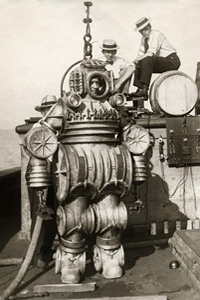
Before turning back the hands of time, I will remind our readers that the term “scuba” stands for “Self-Contained Underwater Breathing Apparatus.” The coining of that acronym for our sport/hobby/profession marked the turning point from diving while tethered to the surface by lines and hoses to being able to move about independently while below the surface. The first practical self-contained system was not invented until 1939 by Christian Lambertsen, whose system was originally called the “Lambertsen Amphibious Respirator Unit.” It was not until a paper Lambertsen wrote in 1952 for the National Academy of Sciences was the phrase used that led to the abbreviation “scuba” for his invention. The next installment of this series will start with Albertsen’s invention, so the present article is limited to the earlier diving apparatus that was not “self-contained.”
For at least five thousand years before the invention of the demand regulator, people have been finding ways to operate below the surface with more than the air they could hold in their lungs with a single breath. Drawn by the desire to harvest sponges, oysters, and other bottom-dwellers, ancient humans started trying to maximize their time under water by breathing through hollow reeds. Alexander the Great, the king of Macedonia, used military divers breathing through such reeds at shallow depths to install submerged barriers to impede invading ships. Herodotus describes how two Greek divers, probably breathing through short reeds, cut the Persian fleet adrift during the Peloponnesian War in 415 BC. There are many drawings of divers from the Roman Empire wearing leather helmets with long tubes supposedly supplying air from the surface, but such contraptions could not have worked more than a few feet below the surface due to pressure differentials.
![]()
What does Herodotus (Greek philosopher) have to do with sharks? Come on you history buffs, I know a couple of you have the answer. It was in 492 BC when he recorded the first account of a marine monster attack (of course it had to be a shark....., maybe). Actually, he never mentions the monster or provides an accurate description. But we can go back to 725 BC where a vase dated to that period (discovered just west of Naples, Italy) depicts a man seized by a shark (OK, maybe it was or wasn’t a shark) .
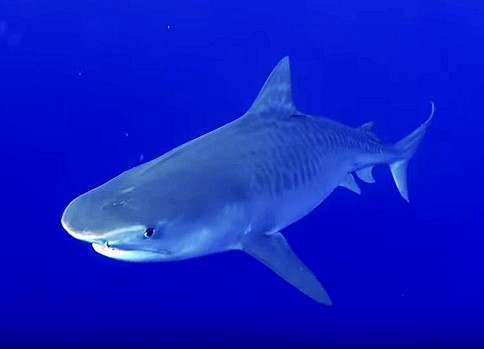 The Vietnamese
refer to the Whale shark as “Mister Fish”. Altars are built along the
coast as a remembrance of a ship sunk by the fish. Pearl harbor has a
unique history. The Hawaiian Kings used the area to have “gladiators”
fight captive sharks there. The only weapon they could use was a
shark’s tooth wrapped to a pole. Think that was rigged? So, you
thought only the Romans had a sadistic side to them? .
The Vietnamese
refer to the Whale shark as “Mister Fish”. Altars are built along the
coast as a remembrance of a ship sunk by the fish. Pearl harbor has a
unique history. The Hawaiian Kings used the area to have “gladiators”
fight captive sharks there. The only weapon they could use was a
shark’s tooth wrapped to a pole. Think that was rigged? So, you
thought only the Romans had a sadistic side to them? .
Japan has a mythological god of the storms. What else could cause them but a god? This god was known as “Shark Man”. Then we have the magical man who was thrown out of a shark’s belly that ate him who is known as “Mutuk”, sounds a lot like the Jonah story. .
So, lets finish this episode with Napoleon. After his defeat (apologies to the French) in 1815 he was invited to watch how a shark was defeated aboard the “Bellerophon”. The crew had learned how to capture sharks, a major feat, and invited the defeated Emperor to watch the spectacle. .
![]()
One of these scholarships/training grants might be perfect for you. If you are a teacher, parent, or friend of a young person (age 13 and above), share this scholarship/training grant information with them.
Application form plus two letters of recommendation must be submitted by the deadline December 30, 2018. Scholarships to be awarded in 2019 encourage you to:
- Become a scuba diver, obtain advanced scuba certification, become a dive instructor
- Become a Diver Medic technician
- Obtain training in underwater photograph
- Participate in marine environmental conservation, marine biology or ecology programs
- Participate in a Hyperbaric Medicine Program
- Explore career opportunities in the maritime industry, such as marine engineer, marine technology, small vessel operations and many more
Remember: the Application Deadline Is December 30, 2018
Check out the scholarships/training grants webpage at http://www.beneaththesea.org/scholarships/67324. Click on 2019 Marine Careers Scholarship & Training Grant Descriptions.
![]()
As many members know, for years I've been doing the eNews, helping with social media and serving on the board and as a Safety Officer for our dive club. I have also volunteered with the Coral Restoration Foundation, participated in Underwater Archaeological diving, honed my skills in underwater photography and videography, and certified countless students for Open Water, Advanced, Nitrox, Rescue and beyond.
One year ago I suddenly foun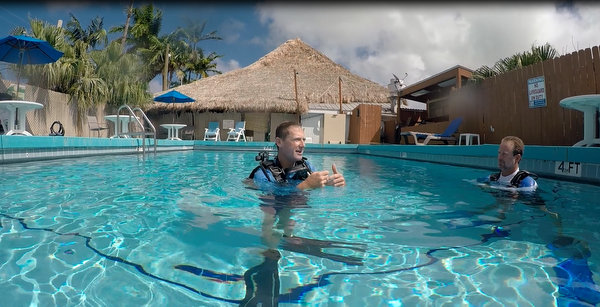 d
myself freed from my stressful and chaotic corporate job of six years.
I decided this was my opportunity to take my time to find the right
and perfect job. Four months later in February of this year I started
working for The Nature Conservancy as the Digital Marketing Specialist
for the Florida Chapter, handling social media, web content, digital
asset management and email. In June they sent me on a weeklong
expedition to the Dry Tortugas on a liveaboard scientific diving
vessel where my job was to take underwater photos and videos during
the day, and interview scientists at night. Yes, it seems I had found
my right and perfect job.
d
myself freed from my stressful and chaotic corporate job of six years.
I decided this was my opportunity to take my time to find the right
and perfect job. Four months later in February of this year I started
working for The Nature Conservancy as the Digital Marketing Specialist
for the Florida Chapter, handling social media, web content, digital
asset management and email. In June they sent me on a weeklong
expedition to the Dry Tortugas on a liveaboard scientific diving
vessel where my job was to take underwater photos and videos during
the day, and interview scientists at night. Yes, it seems I had found
my right and perfect job.
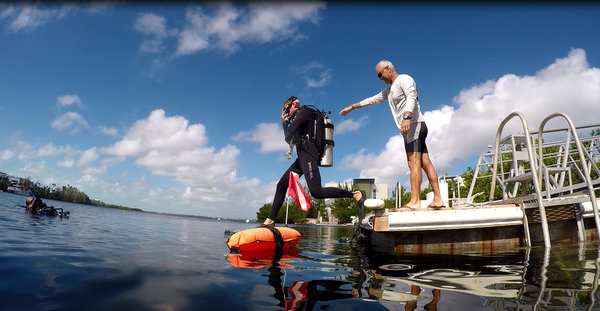 Two weeks ago they sent me to Looe Key and Key West
to earn my American Academy of Underwater Sciences (AAUS)
Certification with an instructor from Hawaii, and students from the
Bahamas and Florida. AAUS is the body that certifies scientific divers
and allows government, NGO's, education and environmental
organizations to ensure safe diving practices and standards for
scientific divers conducting underwater research and activities. The
standards are much more stringent that your average PADI diving
certifications, with the exception of the divemaster and instructor
levels. Because of my experience, they allowed me to train for the
Lead Diver certification in just two days. However, I had to pass
their swim test requirements along with everyone else. I trained hard
to achieve my timed 400-yard swim and was thrilled to have passed it
with seconds to spare, thankfully keeping pace with the 30-something
woman who did the test alongside me in the pool. I was so inspired by
my performance that I have decided to train for my first sprint
triathlon in March of next year.
Two weeks ago they sent me to Looe Key and Key West
to earn my American Academy of Underwater Sciences (AAUS)
Certification with an instructor from Hawaii, and students from the
Bahamas and Florida. AAUS is the body that certifies scientific divers
and allows government, NGO's, education and environmental
organizations to ensure safe diving practices and standards for
scientific divers conducting underwater research and activities. The
standards are much more stringent that your average PADI diving
certifications, with the exception of the divemaster and instructor
levels. Because of my experience, they allowed me to train for the
Lead Diver certification in just two days. However, I had to pass
their swim test requirements along with everyone else. I trained hard
to achieve my timed 400-yard swim and was thrilled to have passed it
with seconds to spare, thankfully keeping pace with the 30-something
woman who did the test alongside me in the pool. I was so inspired by
my performance that I have decided to train for my first sprint
triathlon in March of next year.
The AAUS certification will allow me to lead dives for photographers, journalists and VIP's onboard scientific vessels. This requires a special Lead Diver certification for this purpose, because scientists are not expected to be distracted from their important research, data gathering and other scientific duties to look after photographers and media. Yes it's a tough job, but someone has to do it. And it reinforces the fact that I have indeed found the right and perfect job.
Editor's note:To read more about the AAUS, go to https://www.aaus.org/
![]()
For me, the water temperature indicates that the end of the dive season has arrived. I now begin to prepare to store my dive gear for the next few months until once again, water temperature warms up above the precious mark of eighty degrees.
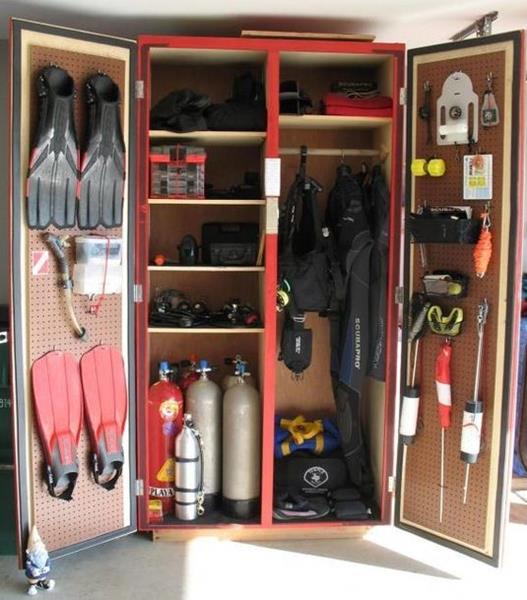 Throughout the
year and after every dive I thoroughly rinse my dive gear,
preventing salt buildup and averting damage or malfunctions. I also
check the gear when hanging it to dry for stress or damage and
replace any needed parts. This routine during the season has worked
well and provides me with confidence that my gear will perform as
expected.
Throughout the
year and after every dive I thoroughly rinse my dive gear,
preventing salt buildup and averting damage or malfunctions. I also
check the gear when hanging it to dry for stress or damage and
replace any needed parts. This routine during the season has worked
well and provides me with confidence that my gear will perform as
expected.
But for lengthy gear storage, I step up the maintenance phase to a much higher level. I begin by soaking my gear for approximately two to three hours in a large bin filled with fresh water, removing any residual salinity. I include a mild liquid soap and conditioner in the water mixture, eliminating any bacteria or odor buildup, especially within bladder of my BCD and my wetsuit. Next, with a hose I meticulously rinse and completely remove the soap and conditioner from the gear. This includes filling the BCD bladder with water and then empting the bladder through all four purge valves on my BCD.
![]()
Next
up: the Portuguese dogfish, around 3 feet in length. This shark
lives in depths greater than all other sharks. It lives in darkness.
The Horn shark is 2 to 4 feet and uses its’ head to crack open
mollusks and crustaceans, thus the name. The dwarf lanternshark is 7
to 8 inches long. Yep, you read that right, inches. Its’
bioluminescent organs make them glow in the dark, which attracts
prey which they then eat.
What all these sharks have is the ability to endure harsh environments and the ability to eat prey. There is also a symmetry to their bodies which make them the greatest swimmers. They just about glide thru the water effortlessly.
These sharks all have an adaptability to special conditions which allow them to live in various environments. Each has a special ability for the condition they live in. It is much as man has evolved only more so since they have been on the earth a lot longer. Think how poorly designed we are to live in water and how greatly they are designed to endure it. I don’t even think we are that greatly designed to live on earth. We have to use various clothing and other aids just to exist here. The sharks have the superior traits to exist. But thankfully we have a better brain to assist us.
![]()
Members who paid for the cancelled dives on May 19 and 20 have been sent checks via US mail and/or issued a refund through their PayPal account. If you have not received your refund by November 3, please call Lon at 305-251-4975. Refunds and credits for any other dives cancelled throughout the dive season will be processed later this year.
The clock is counting down and we are nearing the last chance to renew at a reduced rate. Renew before March 31, 2019 and your membership fee is only $35 for a calendar year of discounts and diving news. After March 31, your annual membership renewal fee is $49.
Your membership includes periodic eNews emails about club activities as well as electronic access to The Mouthpiece monthly newsletter. You may pay by check or online. Go to https://www.activedivers.site/Membership_Renewal.html to renew your membership online. Instructions for paying by check may be found there too.
Want your newsletter delivered via snail-mail? Contact the webmaster and request a printed copy. Be sure to put "Active Divers Newsletter" in the subject.
![]()
If so, please email or call us with your current information. You may send an email to: Dr. Dan Baeza, Membership Chair at ActiveDiversInfo@gmail.com. You can also call Dan at 954-260-8225 and leave a message with your new contact information.
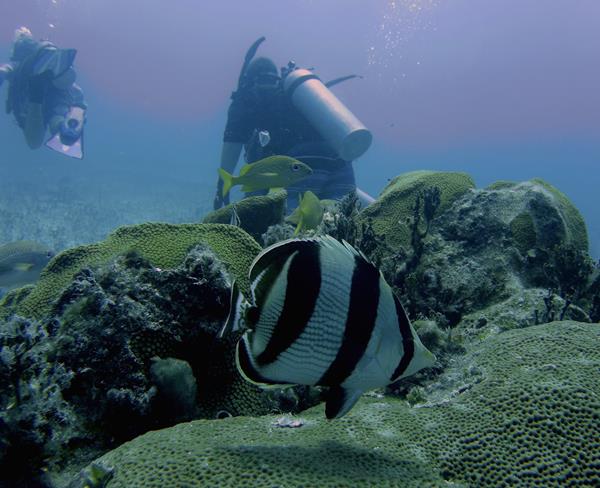
Active Divers T-Shirts For Sale
Show your pride in the best dive club anywhere! Sizes small, medium, large, xlarge, xxlarge. Some tank tops available also. All shirts are $10 each. CALL LON AT 305-251-4975 AND PLACE YOUR ORDER TODAY!. Lon will deliver it to you on your next dive
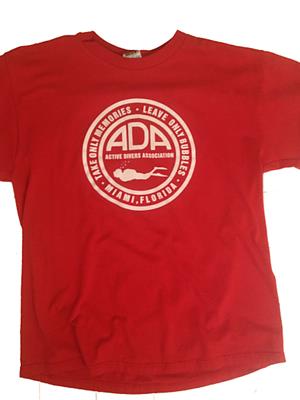
--from Deeper Blue, September 21, 2018
It was recently announced that
Australia’s Great Barrier Reef is showing better-than-expected
signs of recovery after the mass coral bleaching. 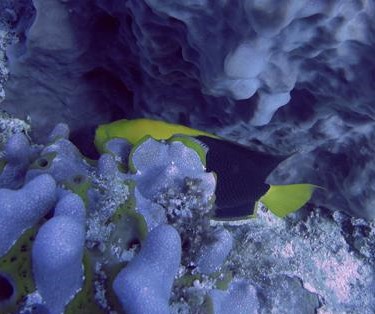
The news was announced by The Reef & Rainforest Research Centre (RRRC), an Australian non-profit organization. They attributed the results to various factors including a mild 2017-2018 summer, as well as increased cooperation between science, industry, and government that aided the recovery of many locations of the reef.
Read the complete story at Deeper Blue.
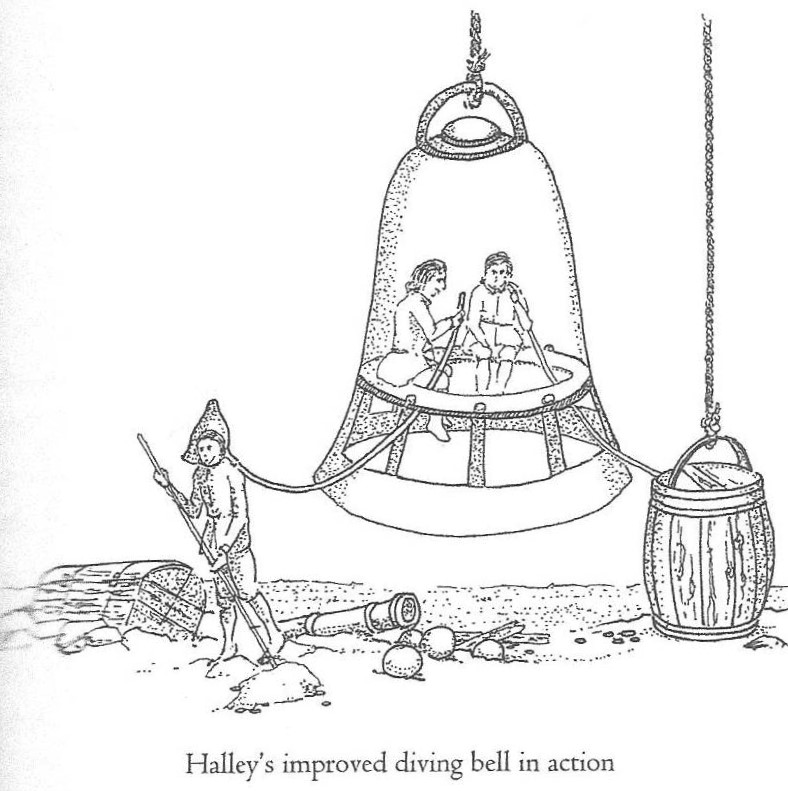 Everyone
has heard of Sir Edmond Halley, the astronomer whose name the famous
comet shares. What few people know about Halley, however, is that he
spent extended periods of time deep underwater. In volume 29 of the
Philosophical Transactions, dated 1714-1716, Halley published the
results of his experimentation in new ways to work comfortably
underwater, titled suggestively: “The art of living under water.”
Halley’s work, in which he improved existing models of diving bells,
turned out to be influential for years after its publication, and
his techniques were implemented by many undersea laborers. One of
those techniques was to replenish the air in the diving bell by
repeatedly lowering barrels of air. He also invented a system using
a watertight hood and hose that allowed workers to leave the bell
and walk around on the bottom. Halley’s improved diving bell could
send several men (there is no reference to women divers back in
those days) to the bottom for salvage work, where they could spend
up to ninety minutes at depths of up to sixty feet.
Everyone
has heard of Sir Edmond Halley, the astronomer whose name the famous
comet shares. What few people know about Halley, however, is that he
spent extended periods of time deep underwater. In volume 29 of the
Philosophical Transactions, dated 1714-1716, Halley published the
results of his experimentation in new ways to work comfortably
underwater, titled suggestively: “The art of living under water.”
Halley’s work, in which he improved existing models of diving bells,
turned out to be influential for years after its publication, and
his techniques were implemented by many undersea laborers. One of
those techniques was to replenish the air in the diving bell by
repeatedly lowering barrels of air. He also invented a system using
a watertight hood and hose that allowed workers to leave the bell
and walk around on the bottom. Halley’s improved diving bell could
send several men (there is no reference to women divers back in
those days) to the bottom for salvage work, where they could spend
up to ninety minutes at depths of up to sixty feet. 
